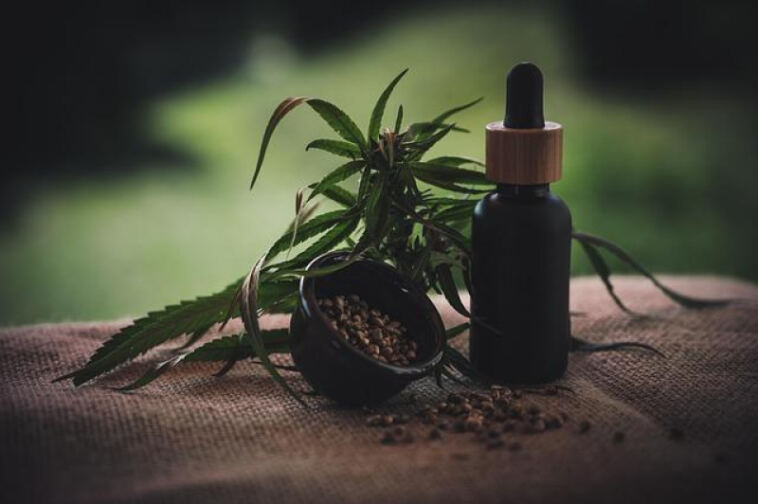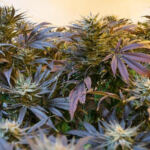- Like
- SHARE
- Digg
- Del
- Tumblr
- VKontakte
- Flattr
- Buffer
- Love This
- Save
- Odnoklassniki
- Meneame
- Blogger
- Amazon
- Yahoo Mail
- Gmail
- AOL
- Newsvine
- HackerNews
- Evernote
- MySpace
- Mail.ru
- Viadeo
- Line
- Comments
- Yummly
- SMS
- Viber
- Telegram
- JOIN
- Skype
- Facebook Messenger
- Kakao
- LiveJournal
- Yammer
- Edgar
- Fintel
- Mix
- Instapaper
- Copy Link
In the ever-expanding world of CBD products, navigating the various options can often feel like embarking on a cryptic quest. However, fear not, for we are here to shed light on one of the most debated topics: Broad-Spectrum vs. Full-Spectrum CBD. These two forms of cannabidiol are often mistaken for one another, but in reality, they offer distinct benefits and characteristics. Join us as we unravel the mysteries and decipher the differences between Broad-Spectrum and Full-Spectrum CBD, helping you make an informed decision on which option best suits your needs.
Headings:
When it comes to CBD products, one of the key decisions consumers must make is choosing between broad-spectrum and full-spectrum options. Both types contain various cannabinoids, but there are some important differences to consider.
Broad-Spectrum CBD:
- Contains multiple cannabinoids, excluding THC
- Offers the entourage effect without the psychoactive effects of THC
- May be preferred by individuals subject to drug testing
Full-Spectrum CBD:
- Contains a wide range of cannabinoids, including THC (but in trace amounts)
- Provides the entourage effect, enhancing the benefits of each cannabinoid
- May be more effective for individuals seeking relief from chronic pain or other medical conditions
Understanding the Types of CBD Extracts
Broad-spectrum and full-spectrum CBD extracts are two popular options for consumers looking to experience the benefits of CBD. While both types contain a variety of cannabinoids and terpenes, there are key differences that set them apart.
Broad-Spectrum CBD:
- Contains multiple cannabinoids and terpenes, excluding THC.
- Offers the entourage effect without the psychoactive effects of THC.
- Ideal for users who want to avoid THC entirely but still benefit from a range of cannabinoids.
Full-Spectrum CBD:
- Contains all cannabinoids and terpenes, including trace amounts of THC.
- Provides the full entourage effect for maximum therapeutic benefits.
- Recommended for users who don’t mind trace amounts of THC and want the full spectrum of cannabinoids.
In conclusion, the choice between broad-spectrum and full-spectrum CBD ultimately comes down to personal preference and the desired effects. Whether you prioritize THC-free options or want to experience the entourage effect in its entirety, both types offer unique benefits for users seeking natural relief and wellness.
Breaking Down the Components of Broad-Spectrum CBD
In the world of CBD products, there are two main categories that often cause confusion: broad-spectrum and full-spectrum. While they may sound similar, there are key differences that set them apart in terms of their components and benefits.
Broad-spectrum CBD contains a wide range of cannabinoids, terpenes, and other beneficial compounds found in the hemp plant, with the notable exception of THC. This means that users can experience the entourage effect without the psychoactive effects of THC. Some of the key components found in broad-spectrum CBD include CBD, CBG, CBC, and terpenes like limonene and myrcene.
On the other hand, full-spectrum CBD contains all of the cannabinoids, terpenes, and compounds found in the hemp plant, including trace amounts of THC. This means that users may experience the entourage effect to a greater extent, but they also run the risk of experiencing psychoactive effects. Some users may prefer the full-spectrum option for its potentially enhanced benefits, while others may opt for broad-spectrum CBD for a THC-free experience.
| Component | Broad-Spectrum CBD | Full-Spectrum CBD |
|---|---|---|
| CBD | ✓ | ✓ |
| CBG | ✓ | ✓ |
| CBC | ✓ | ✓ |
| THC | ✗ | Trace amounts |
Exploring the Entourage Effect of Full-Spectrum CBD
Full-spectrum CBD is known for producing the entourage effect, a phenomenon in which all the compounds within the cannabis plant work together synergistically to enhance each other’s effects. This includes cannabinoids like CBD, THC, and CBG, as well as terpenes and flavonoids. The combination of these compounds is believed to provide more significant therapeutic benefits compared to isolated CBD.
On the other hand, broad-spectrum CBD contains a wide range of cannabinoids and terpenes, but with the THC compound removed. This means that users can still experience the entourage effect without the psychoactive effects of THC. While broad-spectrum CBD may not be as potent as full-spectrum CBD due to the lack of THC, it can still provide a variety of therapeutic benefits.
When deciding between broad-spectrum and full-spectrum CBD, it ultimately comes down to personal preference and the desired effects. Full-spectrum CBD is ideal for those looking for a more potent and holistic approach to wellness, while broad-spectrum CBD is a great alternative for individuals who want to avoid THC altogether. Whichever option you choose, both types of CBD offer unique benefits that can enhance overall well-being.
Comparing the Benefits and Drawbacks of Broad-Spectrum vs. Full-Spectrum CBD
In the world of CBD products, the terms broad-spectrum and full-spectrum often come up, but what do they really mean? Let’s delve into the nuances of these two types of CBD to help you make an informed decision.
Broad-Spectrum CBD:
- Contains a wide range of cannabinoids, but with zero THC
- Ideal for those who want to avoid THC completely
- Offers potential entourage effect without the risk of psychoactive effects
Full-Spectrum CBD:
- Contains a variety of cannabinoids, including THC (but within legal limits)
- Offers potential entourage effect due to the presence of multiple cannabinoids
- May provide more comprehensive benefits due to the inclusion of THC
When choosing between broad-spectrum and full-spectrum CBD, consider your personal preferences, desired effects, and any sensitivities you may have to THC. Both types have their own unique benefits and drawbacks, so it’s important to weigh them carefully before making a decision.
Making an Informed Decision: Choosing the Right CBD Extract for Your Needs
When it comes to choosing the right CBD extract for your needs, it’s essential to understand the differences between broad-spectrum and full-spectrum CBD. These two types of extracts offer unique benefits and cater to specific preferences, so deciphering their distinctions can help you make an informed decision.
Broad-Spectrum CBD:
- Contains a wide range of cannabinoids, terpenes, and other beneficial compounds
- THC content is typically removed through additional processing
- Offers the entourage effect without the presence of THC
- Great for individuals who want to avoid THC completely
Full-Spectrum CBD:
- Contains all the cannabinoids, terpenes, and compounds found in the hemp plant, including trace amounts of THC (less than 0.3%)
- Provides the entourage effect, where all compounds work together synergistically
- Offers a more holistic approach to CBD consumption
- Suitable for those who are comfortable with minimal THC levels
Q&A
Q: What exactly is the difference between broad-spectrum and full-spectrum CBD?
A: Broad-spectrum CBD contains all the beneficial compounds found in the cannabis plant except for THC, while full-spectrum CBD includes all the compounds, including traces of THC.
Q: Are there any benefits to choosing broad-spectrum over full-spectrum CBD?
A: Broad-spectrum CBD is a great option for those looking to avoid THC entirely while still reaping the benefits of other cannabinoids and terpenes found in the plant.
Q: Why might someone choose full-spectrum CBD instead?
A: Full-spectrum CBD offers the potential for the “entourage effect,” where the various compounds work together synergistically to enhance the overall effectiveness of the product.
Q: Can using broad-spectrum CBD still provide the same therapeutic benefits as full-spectrum?
A: While broad-spectrum lacks THC, it still contains other beneficial compounds that can provide relief for a variety of conditions.
Q: Are there any risks associated with using full-spectrum CBD due to the presence of THC?
A: The trace amounts of THC in full-spectrum CBD are typically below the legal limit of 0.3% and should not cause any psychoactive effects. However, individuals sensitive to THC or subject to drug testing may want to opt for broad-spectrum or isolate CBD products.
Q: How can consumers determine which type of CBD product is right for them?
A: It ultimately comes down to personal preference and individual needs. Experimenting with different types of CBD products and monitoring how your body responds is the best way to find what works best for you.
Closing Remarks
In conclusion, the choice between broad-spectrum and full-spectrum CBD ultimately comes down to personal preference and individual needs. While both offer a range of potential health benefits, it’s important to understand the differences in order to make an informed decision. Whether you opt for the comprehensive approach of full-spectrum CBD or the THC-free assurance of broad-spectrum CBD, rest assured that you are taking a step towards harnessing the power of this remarkable compound. Whichever path you choose, may it lead you towards greater wellness and vitality.


